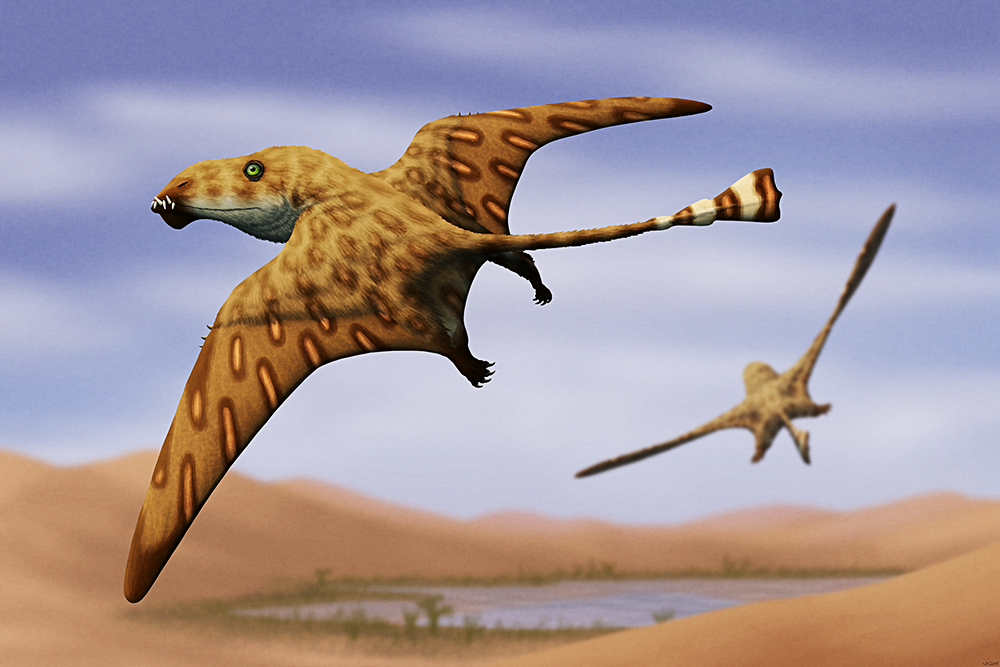Caelestiventus hanseni, a pterosaur from the Late Triassic of Utah, USA. Living about 208-210 million years ago, it was very closely related to Dimorphodon – but unlike its younger coastal-dwelling relative it instead lived in a desert environment made up of a massive sand dune sea with occasional interdunal lakes.
It’s the earliest known example of a desert pterosaur, over 60 million years older than other examples, suggesting that even fairly early in their evolutionary history these flying animals had already adapted to a much wider range of habitats than previously thought.
Although only known from a partial skull and a single wing bone, it was probably one of the largest Triassic pterosaurs with a wingspan of over 1.5m (4′11″). It had a “keel” on its lower jaw that may have supported a soft-tissue crest or a pelican-like throat pouch, and there were several different types of teeth in its mouth – large pointed fangs at the front, “leaf-shaped” blades further back in its upper jaw, and numerous much smaller teeth along its lower jaw.
The skull roof also preserved the impression of Caelestiventus’ brain shape, showing that it had very well-developed vision but a poor sense of smell.

